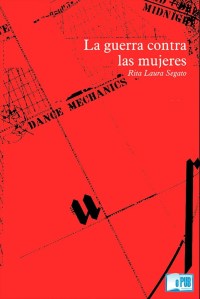How to write about narco? What use is literature in the face of violence and terror? This is, ultimately, the question that narconarratives have to confront. Like it or not, they face much the same challenge as that posed famously by Theodor Adorno in the wake of the Holocaust: “To write poetry after Auschwitz is barbaric.” Is there not something similarly barbaric about continuing to write novels during, let alone about, our current narco epoch? The danger is, as Mexican critic Rafael Lemus puts it, that “novels about narco fulfill a repellent function: they sedate us, they provide consolation. By providing order to disorder, they lessen its impact. By novelizing the narco, they make it seems domesticable” (“Balas de salva” 41). What is more, the writers of narconarrative also stand to profit from the violence they describe. As Lemus trenchantly argues of such authors: “None of these authors engage in denunciation because none of them wants narcoculture to come to an end. It is what feeds their novels, it is what their imaginary depends upon” (42). But is the alternative then silence?
Like Rascón Banda’s Contrabando, Fernando Vallejo’s La virgen de los sicarios has as its protagonist a writer. He is, apparently, a grammarian but in effect what he is writing is the novel that we are reading, told in first person with many an address to the reader, mostly explanations of the idiosyncratic language of Colombia and, in particular, of Medellín during the time of the sicarios (paid assassins) in the aftermath of drug king-pin Pablo Escobar’s death. With Escobar’s organization in disarray (though Vallejo is not particularly interested in how it functions; in fact, he tells us little if anything about the drug trade at all), the dozens, perhaps hundreds, of young men who once killed on its behalf are let loose, purposeless and all the more dangerous for it. If their murders once had some sort of rationale, directed by their superiors further up the narco hierarchy, now they are free to kill for the pettiest of reasons: they see a pair of baseball boots they like; a taxi driver refuses to turn down the volume of his radio; a passer-by rubs them up the wrong way. Vallejo’s narrative is studded with these almost meaningless executions, which go absolutely unpunished by a state that has lost control of the city.
Early on, Vallejo (or rather his narrator, who also goes by the first name Fernando) addresses the issue of how to understand what is in these young men’s minds, in a comment on what draws them to the historic churches that crowd Medellín’s historic city center: “Sociologists say,” he tells us, “that the hitmen ask María Auxiliadora to make sure they don’t miss, that she guide their aim when they shoot and that the deal works out well for them” (11 [15-16]). But the narrator immediately draws back from such rationalization: “And how do they know this? Are they Dostoyevsky or God the Father maybe when it comes to getting inside other people’s minds? A person doesn’t know what he’s thinking himself, so how’s he going to know what other people are thinking!” (12 [16]). Fathoming the sicario mentality requires either divine omniscience or a novelist’s imagination.
Is then this novel a Dostoyevskian exploration of the mind of an assassin? Yes and no. No, in so far as it never directly provides us with the sicario’s perspective: with the narrator we are perpetually by the side of the killers (his two boyfriends: first Alexis, then Wílmar), looking on and reacting to their actions, if from very close by. Fernando consistently marks his distance from them: they are young and he is old; they delight in the pleasures of mass consumption and popular culture, he is austere and has cultivated tastes; they come from the impoverished barrios (the comunas) that surround and overlook the city, which he has never visited. And yet yes, in that this presumption of distance and difference soon breaks down: the narrator harbors his murderous urges, too, and often his sicario boyfriends simply kill on his behalf, indulging his whims, hoping to please him; it turns out (despite his sporadic denials) that his is the mind of a killer, even if his is not the finger on the trigger. It is often as though the sicarios merely act out his fantasies; in the absence of any other direction, he ends up providing it for them. Though he carefully tries to maintain the sense that he is master of a rational ego, through these young boys he finds himself indulging his Id.
But finally, Vallejo seems to acknowledge defeat. An investigation into the sicario phenomenon would require the powers of a great writer, but as he notes near the book’s end, when he visits the morgue to look for Wílmar’s assassinated corpse, “the best writers in Colombia” are not the professional novelists but the “judges and clerks, and there’s no better novel than a court summary” (128 [117]). Why? Their “language enchanted me. The precision of the terms, the conviction of the style. . .” ([117]). A novel, a novelist’s novel at least, is condemned to imprecision, to stylistic uncertainty. Perhaps this is because, over the course of the tale he is telling, the narrator ceases to be a writer–indeed, we never see him work on whatever grammar he may be writing; he seems instead to have all the time in the world to wander the city with his sicario boyfriends, so long at least as they precariously remain in the land of the living. Hence, once they are both dead, the book more or less fizzles out, as the narrator fades away, wishing the reader all the best (“Well, buddy, here we go our separate ways, you’re with me up to here. Many thanks for your company” [(122)]). In the end, “the cinema and the novel are not enough to capture the city of Medellín” ([58]). The best that Vallejo’s novel can do is trace the undoing of the writer, and of its own writing, as its narrator loses the struggle to maintain his distance from what surrounds him and instead accepts, perhaps, his own part in the barbarism.


 In her chapter, “Patriarchy: From the Margins to the Center” (from La guerra contra las mujeres [2017]), Rita Segato goes further. We are all trained to be psychopaths now, she tells us, as part of a “pedagogy of cruelty” that is the “nursery for psychopathic personalities that are valorized by the spirit of the age and functional for this apocalyptic phase of capitalism” (102). Segato presents a brief reading of Stanley Kubrick’s A Clockwork Orange to make her point, though what she sees as “most extraordinary” about the film is that the shock with which it was received when it came out (in 1971) now seems to have almost totally dissipated. What was once taken as itself an almost psychopathic assault on the viewer’s senses is now just another movie; this shift in our sensibility is “a clear indication [. . .] of the naturalization of the psychopathic personality and of violence” (102). The narcissistic “ultra-violence” of the gang of dandies that the film portrays is now fully incorporated within the social order that it once seemed to threaten.
In her chapter, “Patriarchy: From the Margins to the Center” (from La guerra contra las mujeres [2017]), Rita Segato goes further. We are all trained to be psychopaths now, she tells us, as part of a “pedagogy of cruelty” that is the “nursery for psychopathic personalities that are valorized by the spirit of the age and functional for this apocalyptic phase of capitalism” (102). Segato presents a brief reading of Stanley Kubrick’s A Clockwork Orange to make her point, though what she sees as “most extraordinary” about the film is that the shock with which it was received when it came out (in 1971) now seems to have almost totally dissipated. What was once taken as itself an almost psychopathic assault on the viewer’s senses is now just another movie; this shift in our sensibility is “a clear indication [. . .] of the naturalization of the psychopathic personality and of violence” (102). The narcissistic “ultra-violence” of the gang of dandies that the film portrays is now fully incorporated within the social order that it once seemed to threaten. Femininity is all too often defined by the image (and so by the male gaze). Women are reduced to appearance, and judged in terms of the extent to which they measure up to some mythical ideal. Mariana Enríquez’s short story, “Las cosas que perdimos en el fuego” (“Things We Lost in the Fire”), presents a surreal and disturbing counter-mythology that explores what happens when that image is subject to attack, not least by women themselves.
Femininity is all too often defined by the image (and so by the male gaze). Women are reduced to appearance, and judged in terms of the extent to which they measure up to some mythical ideal. Mariana Enríquez’s short story, “Las cosas que perdimos en el fuego” (“Things We Lost in the Fire”), presents a surreal and disturbing counter-mythology that explores what happens when that image is subject to attack, not least by women themselves.